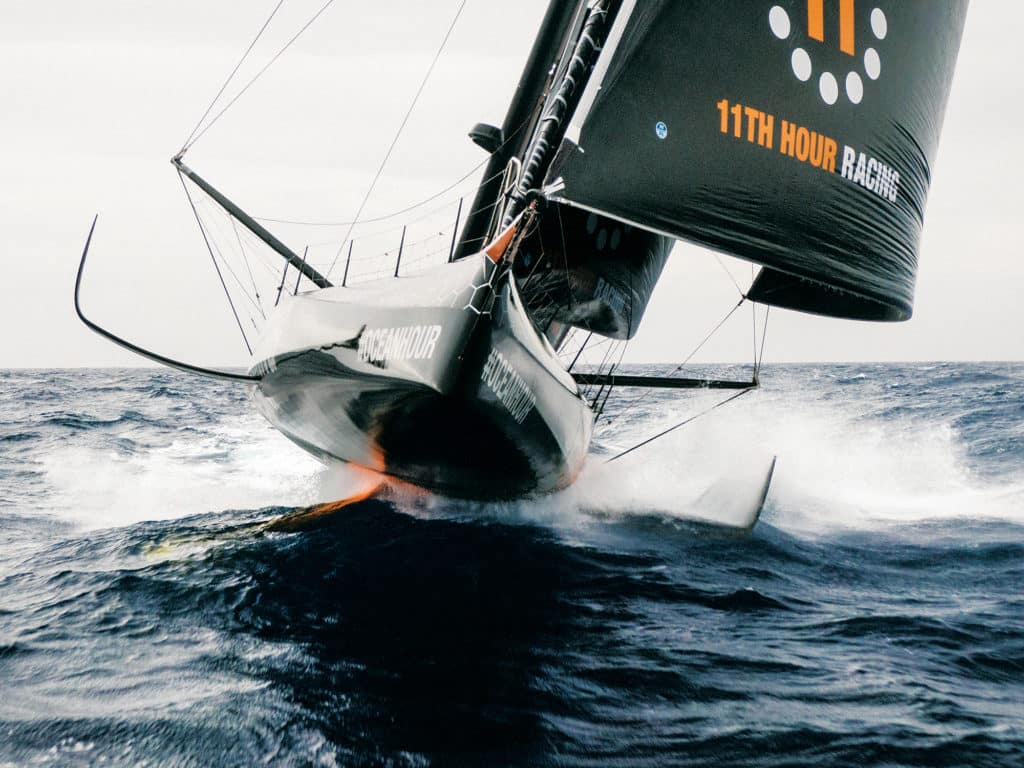
It might be the first time I’ve laughed from absurdity, with uncontrollable amusement at my surroundings and the general state of things.
The instruments have us consistently zooming at 30-something knots, but it’s blowing only 20-something outside our vomit comet. We’re not surfing waves. The Atlantic is flat, and our performance is 100 percent by design. We are foiling through a dark, moonless night at optimal speed in optimal conditions somewhere off the coast of Brazil, bound for France.
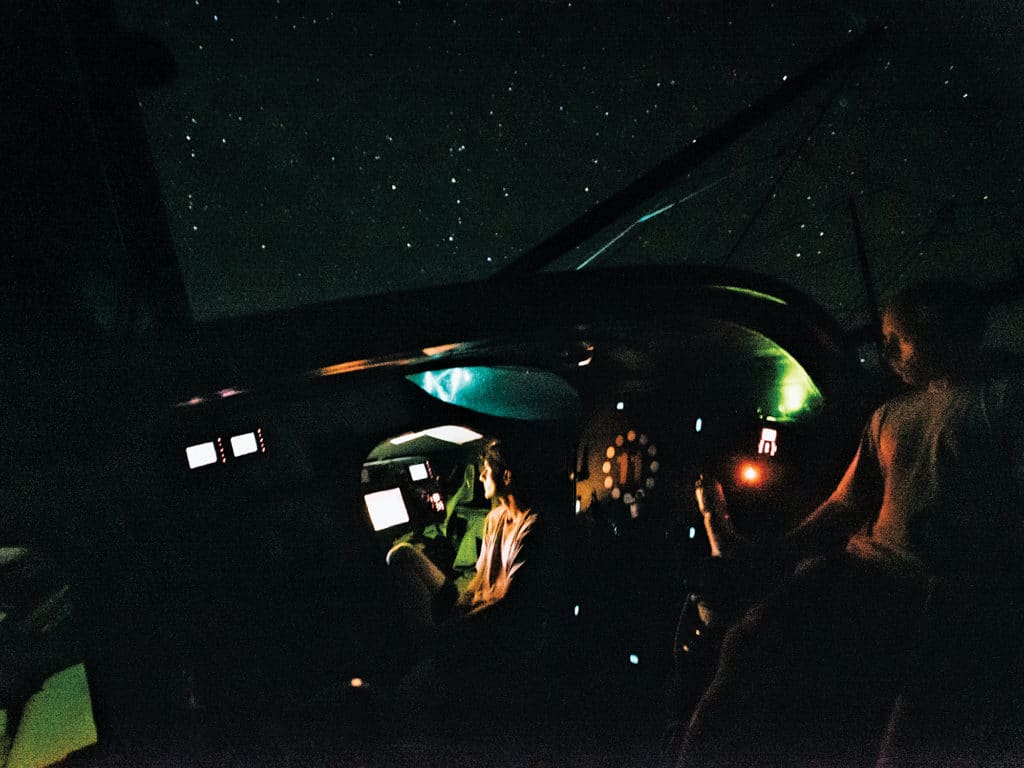
It’s 2 a.m., and I’m lying on top of a pile of unclaimed gear bags and a thin foam pad that is supposed to be used on a bunk. But there is no bunk on this vessel, and there is nowhere else to go inside this 60-footer designed for one sailor. There are six of us, caged in a loud and crowded space not much bigger than a cargo van. For the past seven days, we’ve all tried every nook. This is where I’ve landed, sliding around on the top of a ballast tank like a puck on ice. Sleep is impossible. I start giggling. I can’t help it. The absurdity of it all is laughable.
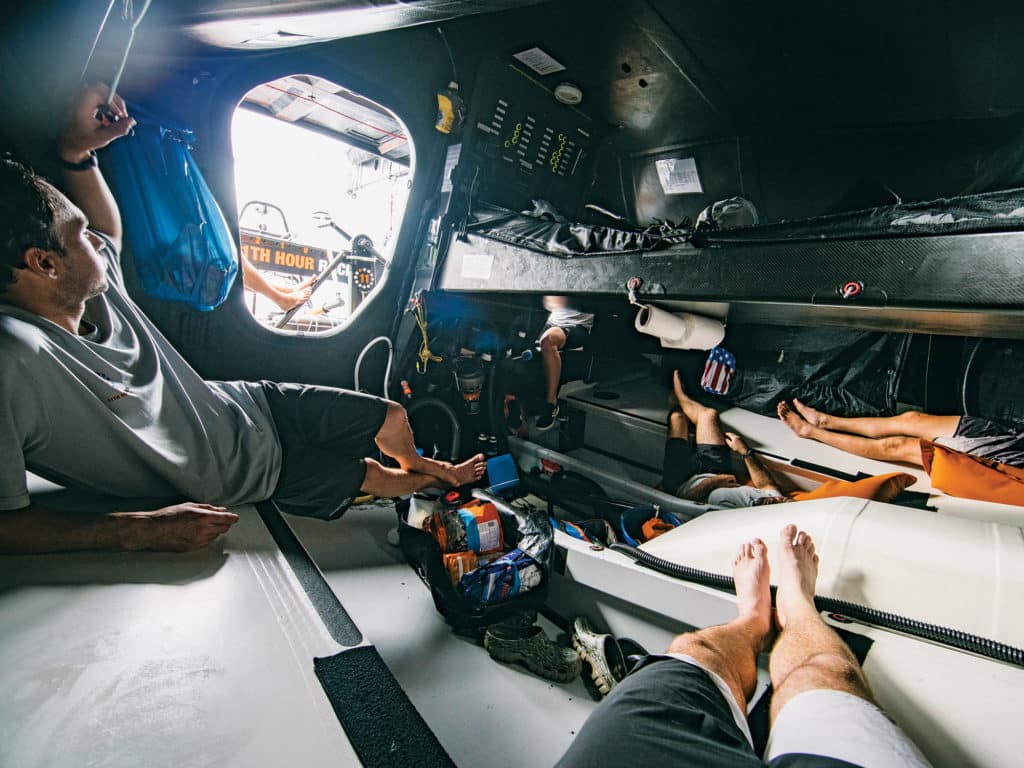
Charlie Enright—lying next to me in the leeward bilge, nestled into a beanbag—is awake too, staring at the coachroof.
I’ve been through a lot with Charlie, but this is entirely new. The high-pitched whine of the foil next to my head echoes around the boat. It’s turbulent, like a jet engine, the hull violently slamming around as if driving on a potholed road back in Rhode Island. I wonder what exactly we are doing, how offshore sailing has evolved so quickly and so aggressively that we are now foiling across oceans. Only a few years ago, we were doing 19 knots in a Volvo 65 in these same conditions. And that felt fast.
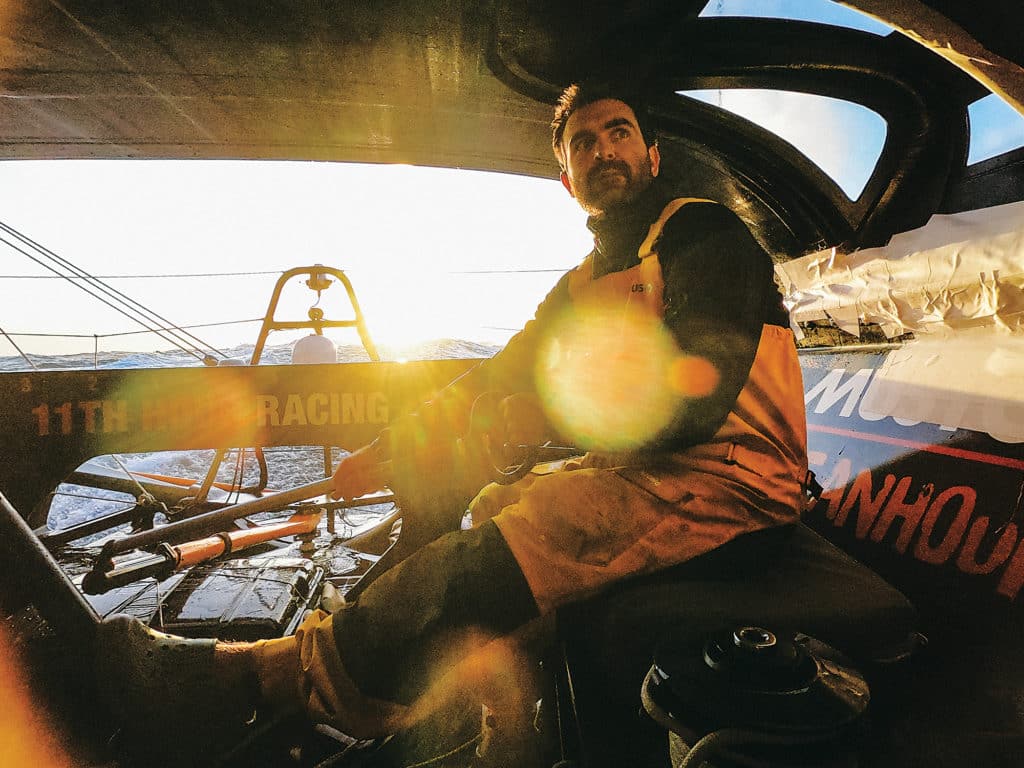
Charlie, who had previously raced the boat doublehanded to Brazil during the Transat Jacques Vabre—for 14 days—must have heard my laughter because he grins, presumably familiar with my disorientation.
“The polars for the new set of foils show us in the 40s,” he says nonchalantly.
I stop laughing and shake my head, wondering what that actually means.
The new foils Charlie referred to will be fitted to the team’s current training boat, while the new boat that he and five other teammates will enter into the 2021 Ocean Race is being built. This edition of the round-the-world race will be contested with two fleets: Volvo 65s and IMOCA 60s. Charlie and his co-skipper, Mark Towill, twice sailed the Volvo Ocean Race with the 65—once with Alvimedica and once with Vestas 11th Hour Racing. This time, they’re gunning for the win with a state-of-the art IMOCA 60.
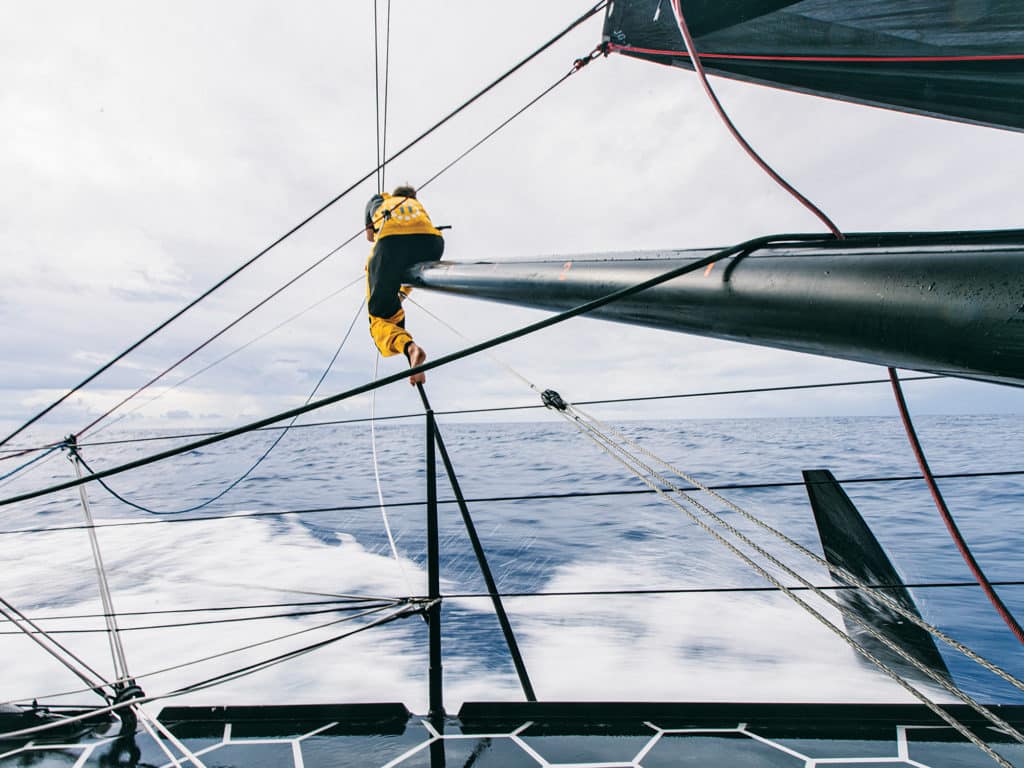
We’re on 11th Hour Racing’s 11.1, an older-generation IMOCA 60 purchased from singlehander Alex Thomson. Other than learning how to sleep, everyone on board is here to soak in the experience for the first time—to learn how to survive, how to push and how to exist.
This is a new style of boat requiring a new set of skills. Each of us, regardless of how many high-speed sea miles we have or don’t have, must now contemplate the foiling part of the equation: Angles and speeds are vastly different. Shorthanded sailing requires a new set of talents; everyone has to learn a lot about a lot—there are no traditional roles. We serve a new title sponsor requiring new priorities, and everyone feels an obligation to the larger global implications of sea and sustainability. We have an opportunity to make a difference in this world.
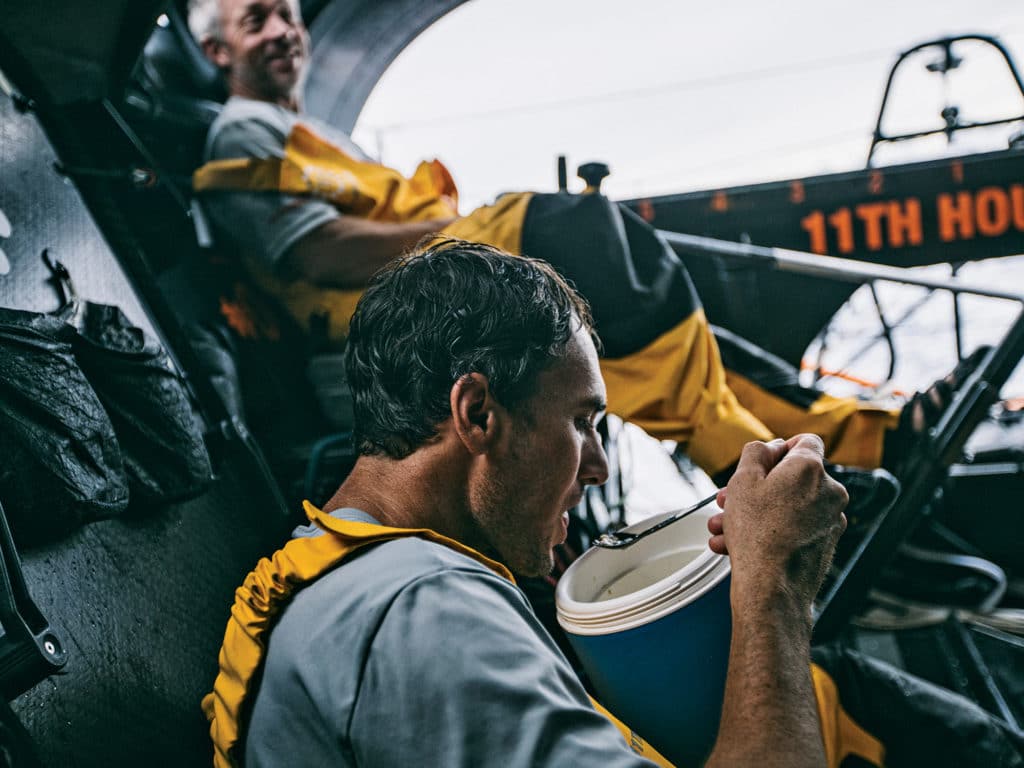
Besides the faces of my teammates, nothing feels familiar. We were in the midst of significant change, and the curve is rapidly shifting beneath us. Outside of a handful of French solo sailors, few people have come to terms with the sheer audacity of foiling across oceans. It is understandably difficult to comprehend—and even harder to achieve. But we have to start somewhere. We’re on a delivery of discovery.
Food is fuel, it’s as simple as that, so while it might seem mundane, the question of how much to have is taken seriously. Offshore sailors burn through insane calories, and nutrition goes hand in hand with performance. As a “media man,” food and supplies fall under my jurisdiction. I pick, pack and prep the meals because it’s a job nobody else wants. Fine by me—it gives me a “watch partner,” something to keep me honest and invested. It holds me to a routine. But this IMOCA 60 has no galley, sink or cooler, just a spigot and a few small containers. All of my old quantity-planning spreadsheets from previous races are for crews of 11 or nine, accounting for a full galley. Six people and a minimalist setup is all new to me.
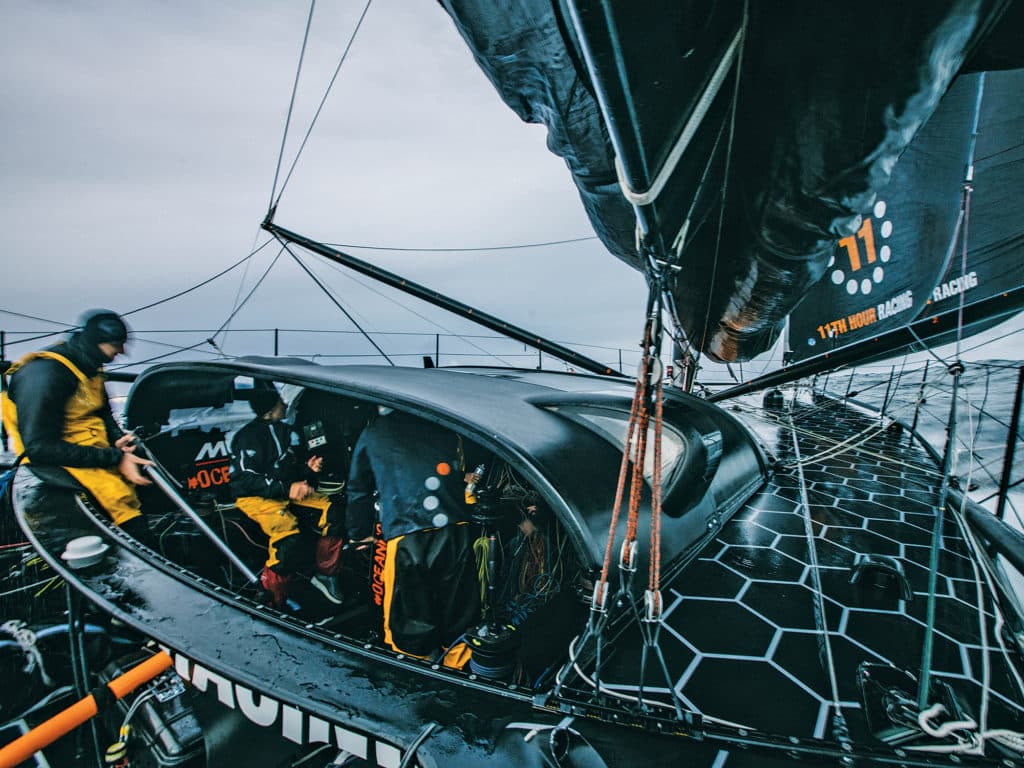
For this delivery, we use freeze-dried meals, remnants from a past campaign, and each sailor decants each meal for him- or herself. This, however, produces a lot of waste, and we can’t be wasteful, so we must try to find another way forward. By the end of the delivery, I will have a much better understanding of how much food six people consume and, more important, what this group of individuals likes and dislikes. We are aiming to work with brands to eliminate extraneous packaging or, even better, eliminate plastic entirely. In the future, we will be trialing reusable silicone bags that hold one meal for six.
Supplies are handled in a similar way. We’ve brought far more toilet paper, baby wipes, toothpaste, butane, etc., than we will need, but knowing how much we use in 15 days will allow me to understand how much of everything we will need come race day. It’s important to start building a food and supply list for a typical race leg.
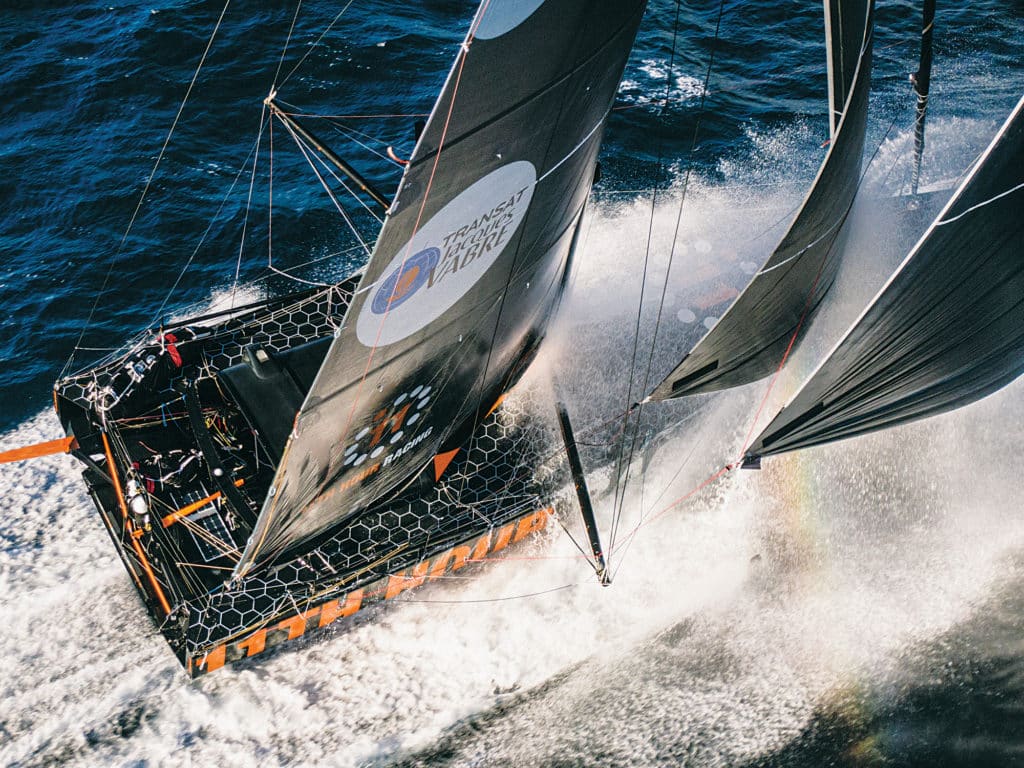
Another great unknown is how much foul-weather gear we will need. Extra gear is slow, but so too is being cold, wet and tired. The Volvo 70s were light. The less you brought, the lighter the boat, the faster you could go. The Volvo 65s were heavy and needed righting moment. The more you brought, the more you could stack, the faster you could go. The IMOCA class is back to situation light. The foils provide so much righting moment, and flight is so essential, that being light could be everything. This means scrutinizing the necessity of things such as spare clothes and foul-weather gear. During this delivery, I put on my dry top only a few times, just to go out and take photos on deck. We can do most of the sailing from inside the cockpit, which is totally covered. Gone are the days of being pelted with water and slammed with waves. We seriously consider having communal gear, used in those possibly rare occasions where one or two of us has to venture outside our igloo. If we don’t absolutely need it, it stays off the boat.
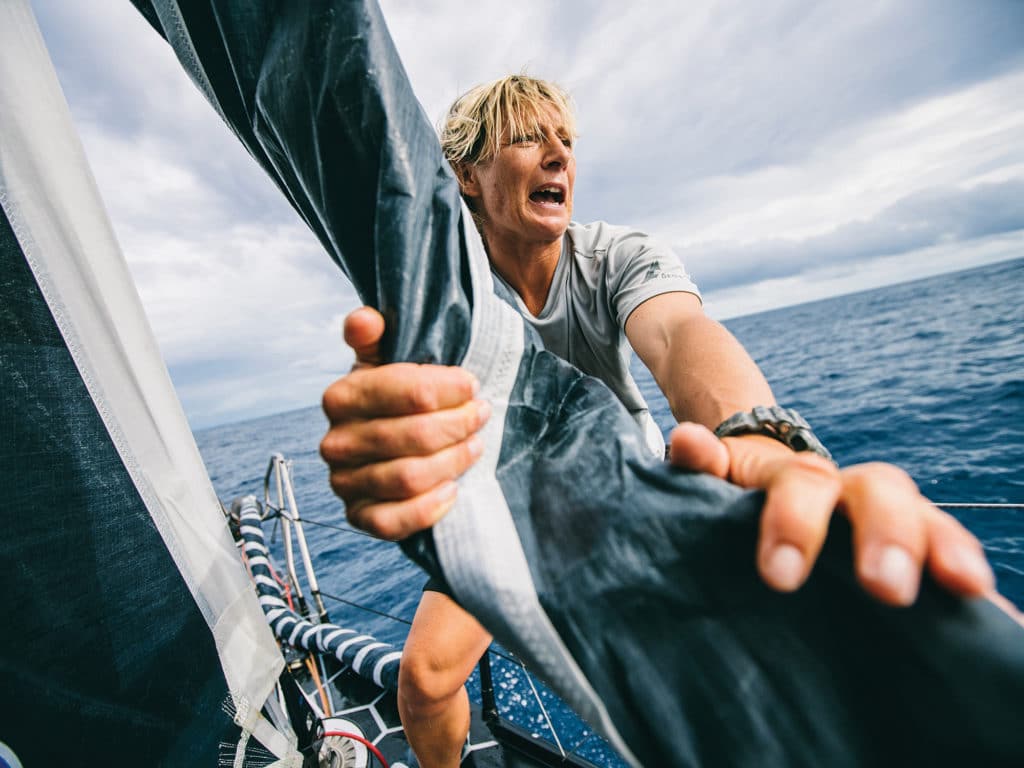
Developing the ideal watch system is one of trial and error. We cheat a bit here. There are always two of us on deck, with four sailors running independent four-on/four-off watches and a single rotation every two hours. Charlie and I float. I obviously won’t be able to float when we get down to racing, so the number of available bodies actually drops to five. The watch system will need a lot of attention, but it feeds directly into the one burning question on everyone’s mind, especially after our Chinese jibe in the middle of the night: How much do we trust the autopilot?
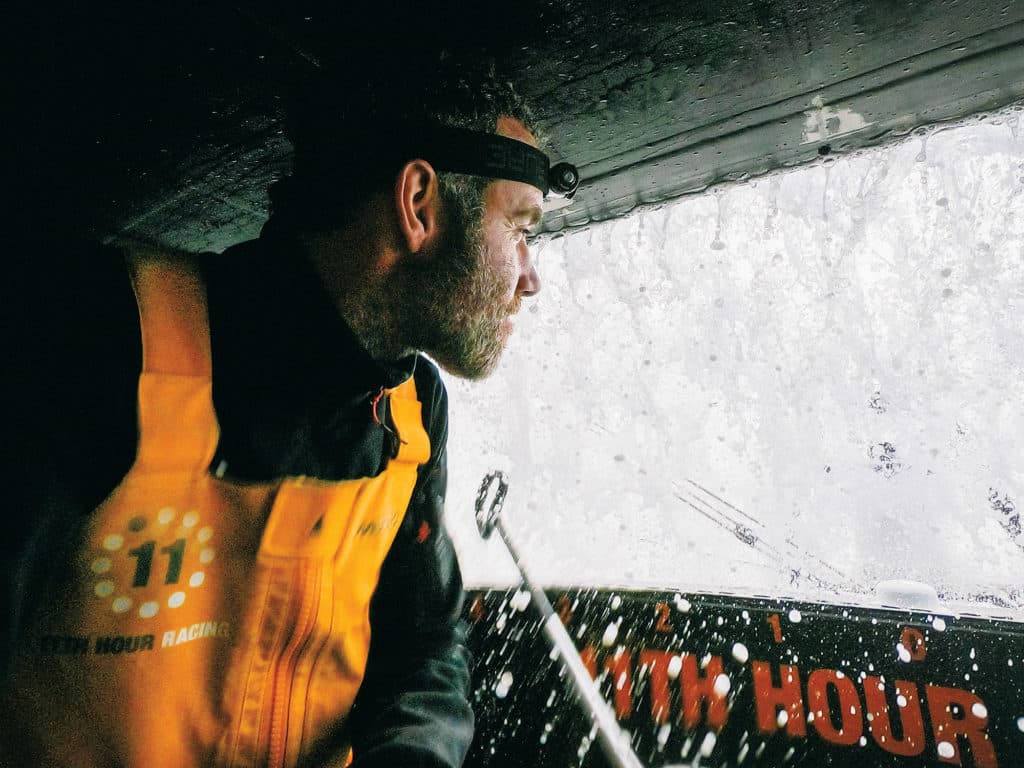
It’s impossible to predict when the aged autopilot will decide to go on break, but it generally happens when you least expect it. Usually, by the time you figure out it’s not “doing its thing,” it’s already too late. This time, it’s a 2 a.m. carve-down that goes well past the point of no return. We jibe, the boom swings across, and the boat is on its side. The major problem is that the leeward rudder, which was our windward rudder, is in its raised position, and the windward rudder, which was in its down position, is useless. Standing in waist-deep water at the back of the boat, we struggle to wrestle the upright rudder to get it down; there are a lot of moving parts in the rudder system that make it difficult to move under load. Plus, we’ve never done this before, so it takes longer than it should. Eventually, Charlie is able to pull on the half-lowered rudder to bear away, it’s a quick reminder that we have lots to learn.
The autopilot is—for now—untrustworthy, at least to us.
Race organizers want to limit autopilot usage to maintain a clear point of differentiation with the rest of the offshore-racing world. The feasibility of that for five sailors is uncertain, however. We spent a lot of time under autopilot during our delivery sprint. Driving when you can’t see is really hard, and the IMOCA 60 is designed with autopilot in mind. Visibility is second. It gets more complicated too when we consider the race’s desire to attract existing Vendée Globe IMOCAs into the event. These boats are already fitted with autopilots, and asking teams to remove or nullify their systems—when they were fundamentally built around them—is difficult. There’s no question that the autopilot would be used, but there’s also no question the human hand would be faster, fatigue and visibility aside.
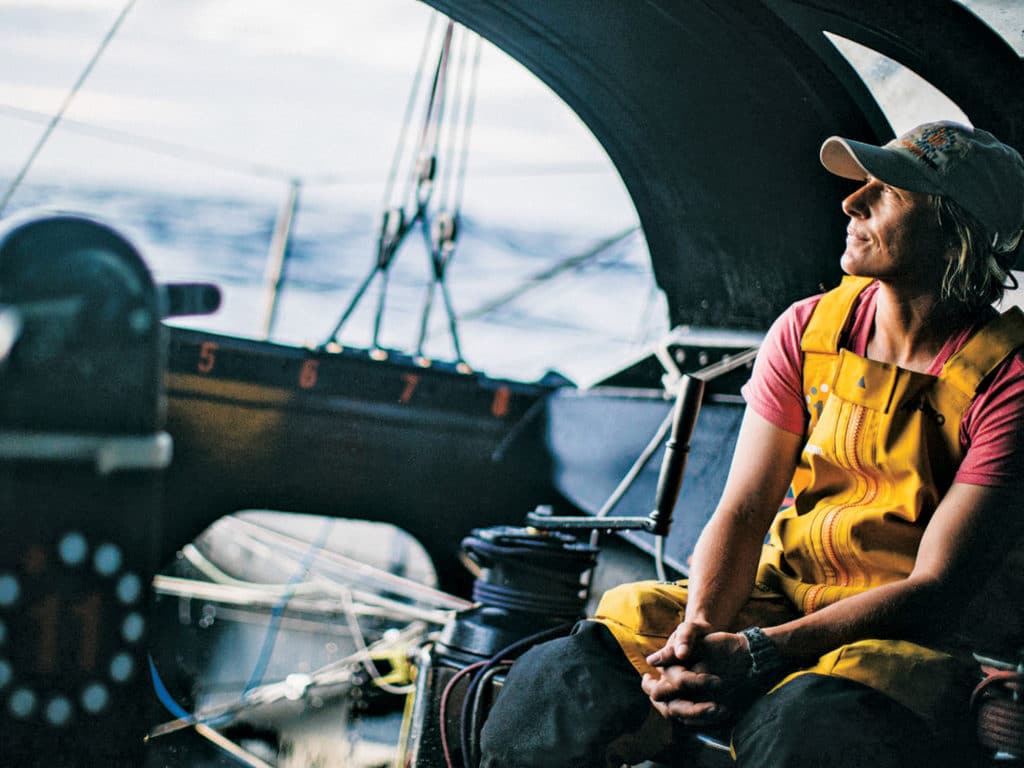
Fatigue is a big deal, by the way, and it comes with a lack of sleep. On this trip, we are scattered around inside like rolling pebbles. Every time I look, somebody is on the move, trying some other place, a different position—nothing works. Collectively, sleep is elusive, and it will be even more of an issue as the foils get bigger. The way the boat moves and the way it sounds when you’re foiling make sleep problematic. The singlehanded guys don’t use bunks, and there’s a decent chance we won’t either. That’s because berths take up a lot of space, and with the IMOCA 60, getting weight outboard is no longer a requirement. It’s more about fore-and-aft trim. I envision beanbag chairs and extreme exhaustion as the new norm, the price to pay for crossing oceans at 40 knots.
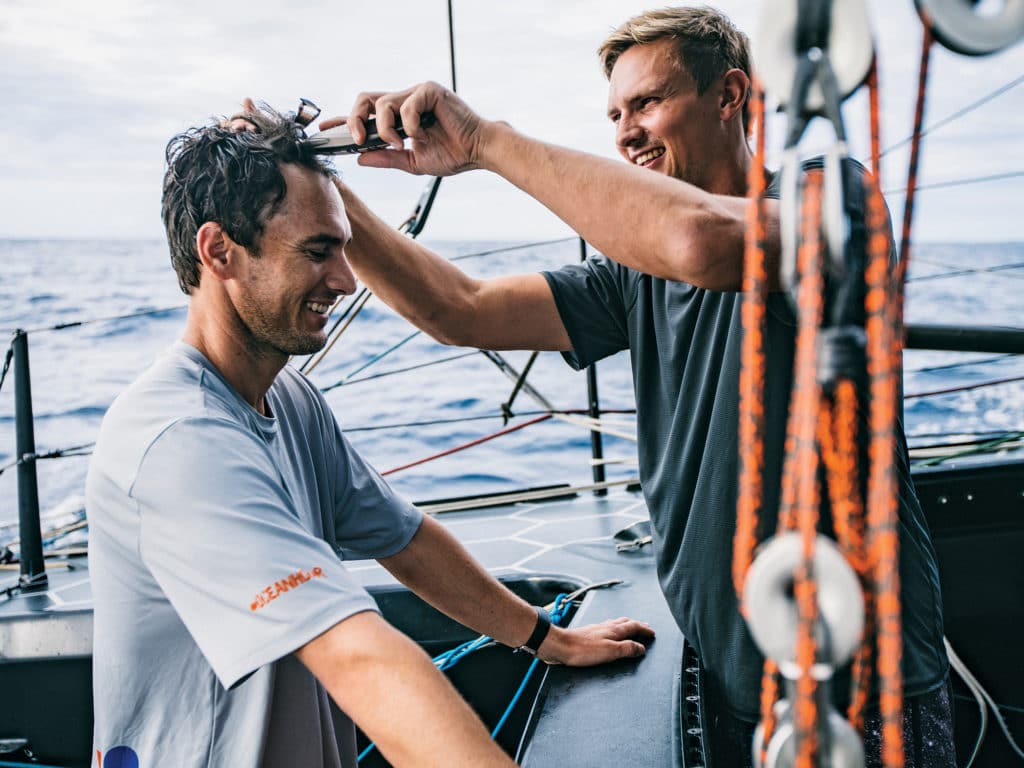
Remember, this is a fully crewed adventure on a boat made for one. The paradigm has shifted here. We are no longer defined by our position on the roster. We have to do practically everything. With so few people, one must be good at every position. Charlie, for example, can now repair a watermaker, navigate, and hoist a J3 from the pedestal or bow. Everyone needs to understand everything in a completely different way.
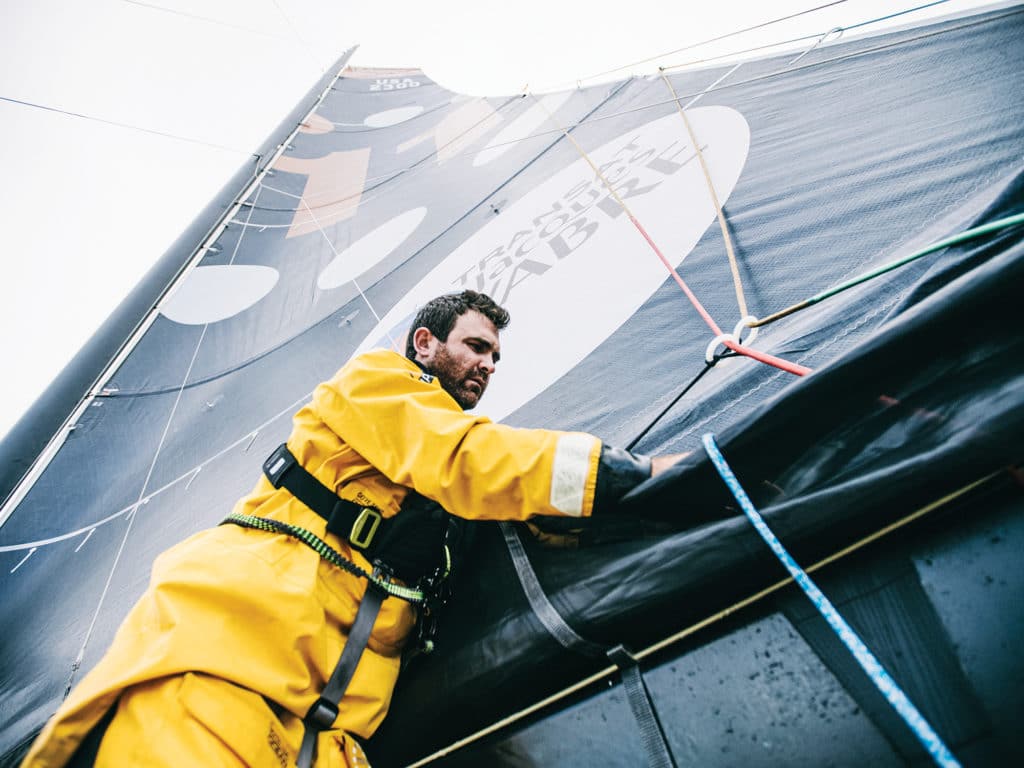
The IMOCAs might be 60 feet long, but in terms of usable interior, they are actually much smaller. With the high speeds these boats maintain and their unpredictable mannerisms, no one risks going forward on deck or down below. If you must do something out of the cockpit, we must either turn downwind or slow down. Things that were traditionally forward, such as the plumbed head, would be unusable at speed, so it simply doesn’t exist on the boat. Instead, we use a rubber bucket placed in the bilge. Private moments are always in close proximity to someone else. It’s uncomfortable to start, and uncomfortable to finish, but there is no better solution.
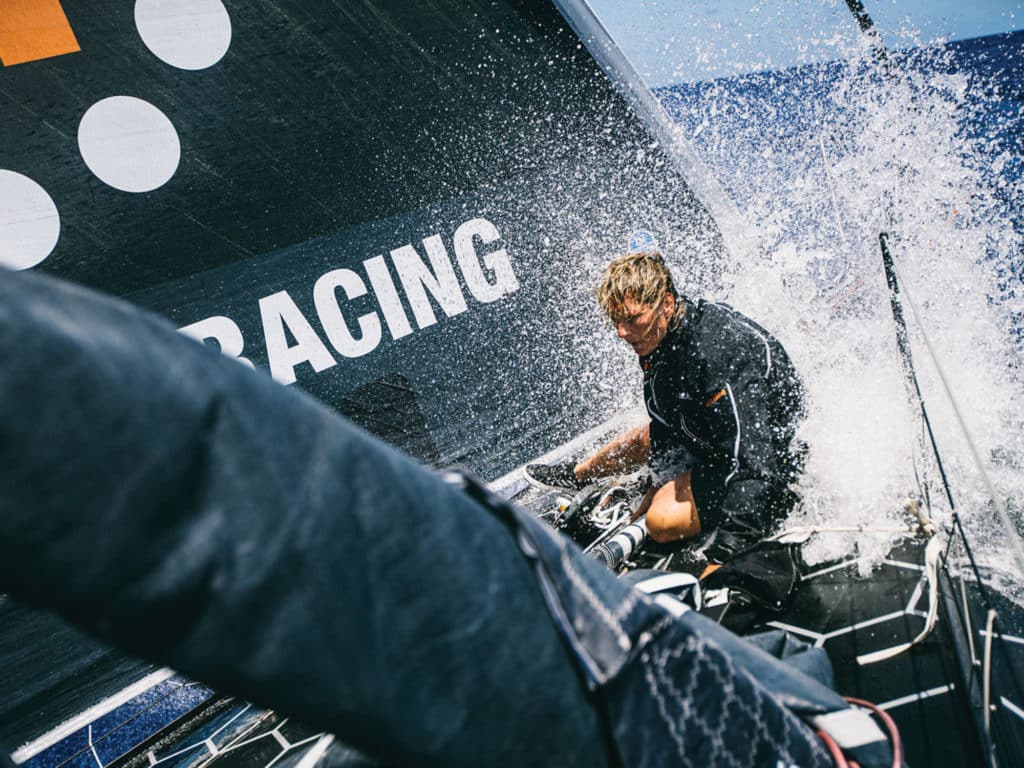
We’re uncertain how hard our boat can be pushed, and consequently, we’re just getting to know its potential. In the Vendée Globe, solo sailors spend most of their time throttling back and letting the autopilot lead because they are designed to be ultralight for the midlatitudes and reefed for the extremes. We, on the other hand, will inevitably spend most of our time throttling forward, with both hands on the helm. Class rules state that the rig and keel must be one-design, but their actual limits are largely unknown. We will add fiber optics to our mast and foils to start visualizing stresses in real time. With a full crew pushing the boat beyond known limits, we could be faster, but we also might be at risk of breaking the boat. We are cautious on our way north, but relative to other IMOCAs around us, also delivering to France, we feel fast.
We arrive after 14 days on board. Our bodies are wrecked, on account of little sleep and much discomfort. These boats will be difficult to race and endure, but we have started learning—and acclimating. For a collection of veterans used to having a lot of the answers, there is much uncertainty.
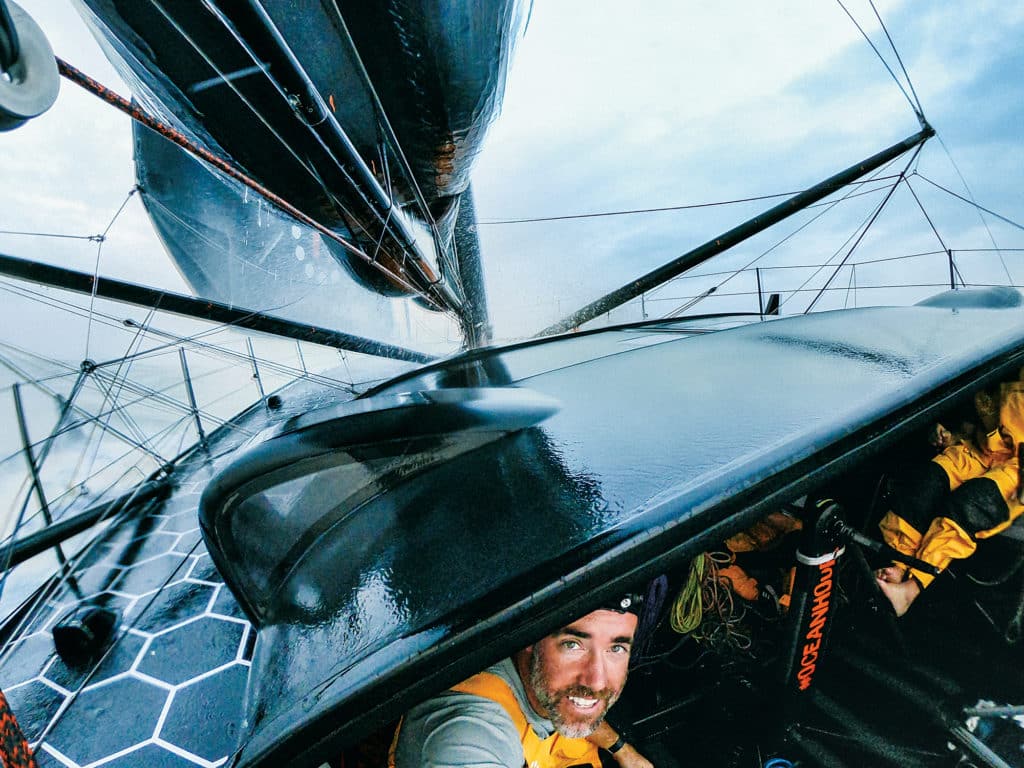
It’s this adventure into the unknown that attracts us to this next Ocean Race. We have a blank slate. What better way to begin than with a 15-day trans-Atlantic bringing us through almost every climate and every condition? Deep summer to deep winter. Sailing upwind, across the wind and downwind. Through the trade winds, the Doldrums and the Bay of Biscay.
As we debrief in Lorient, following the long and varied trip with an unfamiliar craft, it really feels like a wildly new chapter in a repetitive book. Exciting, revolutionary adventures are ahead.









